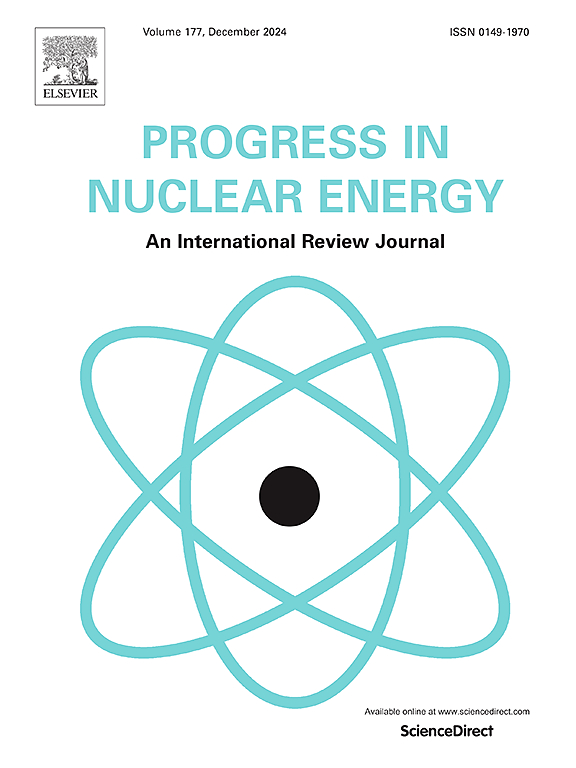An overview of the prediction methods for the heat transfer of supercritical fluids
IF 3.3
3区 工程技术
Q1 NUCLEAR SCIENCE & TECHNOLOGY
引用次数: 0
Abstract
Enhancing coolants or working fluid properties has been of interest for decades. One of the most convenient ways is to use fluids operating at conditions higher than the thermodynamically defined critical point. Such fluids are called supercritical fluids. Supercritical fluids can be used in multiple engineering applications, such as jet propulsion systems, power plants, and nuclear reactors. One of the Generation IV reactors is the Supercritical Water Reactor, which utilizes supercritical water as a coolant. However, the inclusion of supercritical fluids in such industries is constrained by the vague nature of heat transfer when used in thermal systems. Predicting heat transfer is vital, especially in thermally sensitive systems like nuclear reactors. Until now, the scientific community has lacked a generalized and accurate method to predict the heat transfer of these fluids. This paper aims to provide an overview of the recent attempts to understand and predict the heat transfer of supercritical fluids by different methods. These methods include experiments, Computational Fluid Dynamics, and machine learning, which are used to generate models for predicting heat transfer.
求助全文
约1分钟内获得全文
求助全文
来源期刊

Progress in Nuclear Energy
工程技术-核科学技术
CiteScore
5.30
自引率
14.80%
发文量
331
审稿时长
3.5 months
期刊介绍:
Progress in Nuclear Energy is an international review journal covering all aspects of nuclear science and engineering. In keeping with the maturity of nuclear power, articles on safety, siting and environmental problems are encouraged, as are those associated with economics and fuel management. However, basic physics and engineering will remain an important aspect of the editorial policy. Articles published are either of a review nature or present new material in more depth. They are aimed at researchers and technically-oriented managers working in the nuclear energy field.
Please note the following:
1) PNE seeks high quality research papers which are medium to long in length. Short research papers should be submitted to the journal Annals in Nuclear Energy.
2) PNE reserves the right to reject papers which are based solely on routine application of computer codes used to produce reactor designs or explain existing reactor phenomena. Such papers, although worthy, are best left as laboratory reports whereas Progress in Nuclear Energy seeks papers of originality, which are archival in nature, in the fields of mathematical and experimental nuclear technology, including fission, fusion (blanket physics, radiation damage), safety, materials aspects, economics, etc.
3) Review papers, which may occasionally be invited, are particularly sought by the journal in these fields.
 求助内容:
求助内容: 应助结果提醒方式:
应助结果提醒方式:


